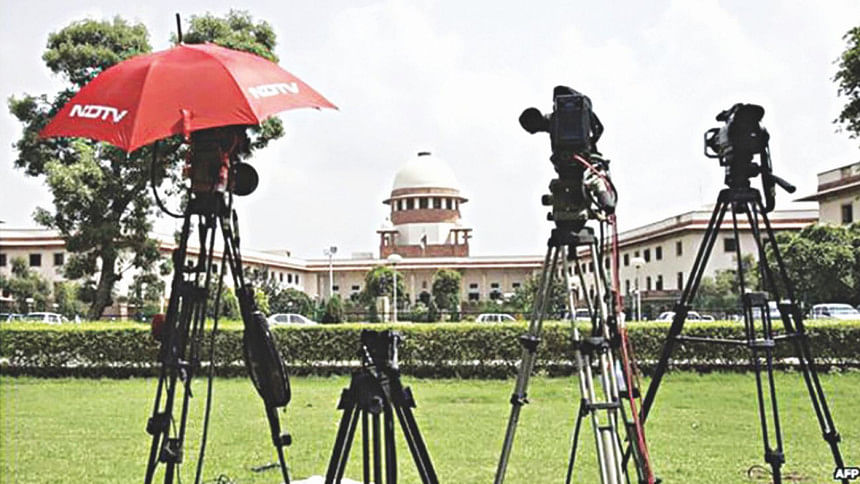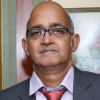What now for India's judiciary?

The never-before-seen public show of rift in India's highest judiciary recently—the hallowed Supreme Court—following the questioning by four senior judges of the apex court of the country's chief justice, Dipak Misra, over allotment of sensitive cases, has plunged the jurists and politics of the world's largest democracy into an unprecedented turmoil.
For decades the Supreme Court has set the agenda on matters of public-policy-and-order measures taken in public interest. The apex court has often stepped in to set things right which the executive should have done. On many occasions, the apex judicial forum was seen as the messiah of the masses who found themselves at the receiving end of a faltering executive. This has from time to time sparked concerns, particularly from politicians, over what was termed as "judicial activism." While differences between the government of the day and the highest judiciary are nothing new, especially over appointment of judges to the higher courts, this was the first time that such a public spectacle of rift within the apex court has been witnessed. The near-unity seen in the apex court in the stand-off with the government over appointment of judges to higher courts lies in disarray.
The face-off between the four judges—Justice Ranjan Gogoi, Justice Madan Bhimrao Lokur, Justice Kurian Joseph and Justice Misra—was the culmination of simmering differences for quite some time. The first major point of rift came out in public when a public interest litigation alleging judges' involvement in a medical scam was mentioned for urgent hearing before a bench headed by Justice Chelameswar in December last year. In November, the CJI had, in an order, declared that the chief justice "is the master of the roster" having exclusive power to decide which case will go to which judge.
However, another important trigger for the stunning press conference by the four senior-most judges was Justice Misra's turning down of a plea for shifting a politically-sensitive case relating to the "fake (police) encounter" killing of gangster Sheikh Sohrabuddin in Gujarat in which BJP President Amit Shah was an accused (he was later acquitted) to a bench of his choice. On January 11, the CJI-led bench had admitted a petition seeking a probe into the death of BH Loya who, as a special judge, was hearing the "fake encounter killing" case.
As if the presser by the four judges was not enough, they also made public a seven-page letter to the CJI. The letter, first sent to the CJI a couple of months ago, said "It is with great anguish and concern that we have thought it proper to address this letter to you so as to highlight certain judicial orders passed by this court which has adversely affected the overall functioning of the justice delivering system and the independence of the high courts besides impacting the administrative functioning of the office of the Hon'ble Chief Justice of India." The letter said that there have been instances where cases having "far-reaching consequences for the nation" and the institution have been assigned by the chief justices of this court "selectively to the benches 'of their preference' without any rational basis" for such assignment. "This must be guarded against at all costs."
The media conference by the four judges and their making public the letter underlined one thing clearly: the simmering differences between the country's top judge and some senior-most judges in the apex court in recent months. At present, India's apex court has a total strength of 25 judges. The four judges accused Justice Misra of not taking any "remedial measures" on some of the issues which affected the functioning of the apex court that they had raised. Justice Misra became the chief justice of India on August 28, 2017 and he is due to retire on October 2 this year. The criticism by the four judges of Justice Misra was very sharp and indicated that all is not well in the Supreme Court administration. What is more worrying is that it is the CJI and the four judges who make up the Supreme Court collegium that selects judges for the higher judiciary.
The main issue now is how to resolve the stand-off within the country's top judiciary. The BJP-led government at the centre made it clear it is not going to intervene and said the judiciary will resolve the issue itself. "Our judiciary is reputed all over the world, independent and they will sort the matter themselves," said Minister of State for Law PP Chaudhary. However, questions are being asked if the public show of rift could have been averted had the chief justice of India intervened on time or even an hour before the press conference. The media had confirmed information about the presser by the four judges at least one-and-a-half hours before the event. The question being asked is: Could nothing have been done in the space of 90 minutes to take an initiative for addressing the concerns of the "rebel" judges which could have then averted what was termed "washing the dirty linen in public view"?
India's top law officer Attorney General KK Venugopal, who had a meeting with Justice Misra after the joint news conference of the four judges, said that it "could have been avoided." There are many who question whether the four senior-most judges should have gone to the media with their differences with the CJI or made public a letter they had written to Justice Misra. There is also the contrarian view that the four judges had no option but to go public because of the important issues involved having ramifications for the independence and integrity of the judiciary and the fact that Justice Misra, as the head of the judiciary, had not been able to sort out the differences. Will the rift affect the functioning of the collegium which appoints judges to the higher judiciary?
A political slugfest following the rift in the apex court has begun. The main opposition Congress Party's President Rahul Gandhi called the points raised by the judges "extremely important" that "must be looked into carefully." His party said it was "deeply perturbed" by today's developments and asked the top court's judges to jointly take up the issues flagged by the four judges. This predictably drew criticism from the ruling BJP which accused Rahul and Congress of politicising the rift in the apex court over allocation of cases. Congress wanted the petition concerning the death of Judge Loya to be entrusted to the senior-most judges of the Supreme Court "who should ensure that under their supervision there is a thorough and impartial investigation of the case by an independent SIT (special investigation team)." BJP promptly accused Congress of politicising the issue of rift in the apex court.
But politicians would be well advised to stay away from meddling in a crisis never seen before in the apex judiciary which does not augur well for such a key pillar of democracy. Let the apex judiciary sort out its issues by themselves through introspection and internal debate because the integrity of the judiciary takes precedence over everything else at a time when the apex court has so often been the messiah when the political executive or the legislature had failed the people. A solution is not easy despite efforts by the chief justice of India and the four senior-most judges. The Bar Council of India has also stepped in. But the tension and a sense of unease between the judges in the stand-off persist. The sooner it is left behind, the better for the Indian judiciary.
Pallab Bhattacharya is special correspondent at The Daily Star.

 For all latest news, follow The Daily Star's Google News channel.
For all latest news, follow The Daily Star's Google News channel. 



Comments